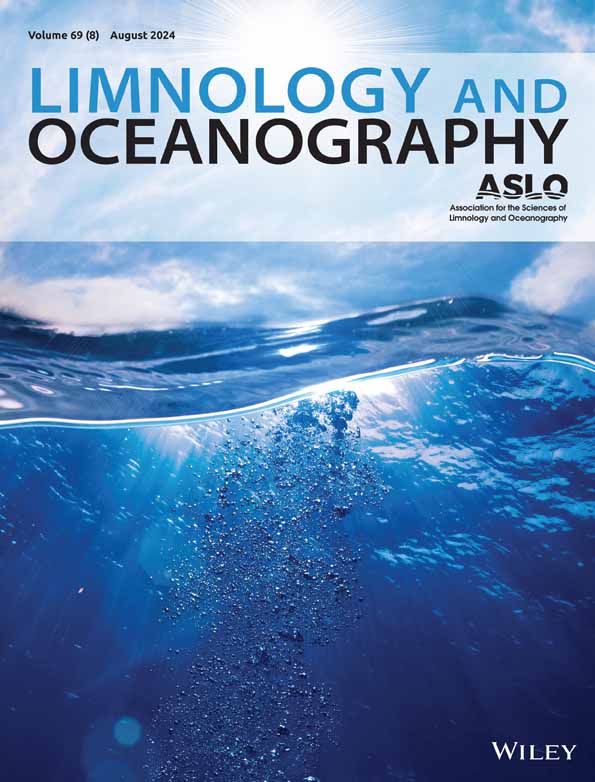Income and capital breeding
IF 3.7
1区 地球科学
Q1 LIMNOLOGY
引用次数: 0
Abstract
Copepods of the genus收入与资本培育
桡足类是北极和亚北极海域从初级生产者向更高营养层能量转移的关键物种。不同物种之间的繁殖时间可能不同,这取决于它们是依靠外部能源(收入育种者)还是使用内部能源(资本育种者),或者两者兼而有之。物种之间的高度形态相似性,特别是在同系中共同发生时,限制了以往仅依赖形态鉴定的物种特异性生活史特征结论的可靠性。本研究采用分子物种鉴定的方法,比较了挪威北部峡湾共生的北极光Calanus hyperboreus、冰川Calanus glacialis和finmarchicus的繁殖策略。在整个年周期内,以高时间分辨率测量了成年雌性的脂质含量,并确定了每个物种的nauplii的存在。研究结果表明,大北风和冰川是严格意义上的资本育种者,而金雀花是收入育种者。
本文章由计算机程序翻译,如有差异,请以英文原文为准。
求助全文
约1分钟内获得全文
求助全文
来源期刊

Limnology and Oceanography
地学-海洋学
CiteScore
8.80
自引率
6.70%
发文量
254
审稿时长
3 months
期刊介绍:
Limnology and Oceanography (L&O; print ISSN 0024-3590, online ISSN 1939-5590) publishes original articles, including scholarly reviews, about all aspects of limnology and oceanography. The journal''s unifying theme is the understanding of aquatic systems. Submissions are judged on the originality of their data, interpretations, and ideas, and on the degree to which they can be generalized beyond the particular aquatic system examined. Laboratory and modeling studies must demonstrate relevance to field environments; typically this means that they are bolstered by substantial "real-world" data. Few purely theoretical or purely empirical papers are accepted for review.
 求助内容:
求助内容: 应助结果提醒方式:
应助结果提醒方式:


